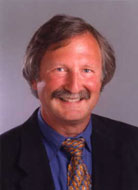 Sleep apnea is a condition in which you repeatedly stop breathing during the night. There are two main types of apnea. One type is obstructive. In this condition, the pipe that carries air into the lungs gets blocked intermittently. The other type is central, which means that the trigger in the brain that signals breathing intermittently stops working. Obstructive sleep apnea (OSA) is the condition that we are most concerned with.
Sleep apnea is a condition in which you repeatedly stop breathing during the night. There are two main types of apnea. One type is obstructive. In this condition, the pipe that carries air into the lungs gets blocked intermittently. The other type is central, which means that the trigger in the brain that signals breathing intermittently stops working. Obstructive sleep apnea (OSA) is the condition that we are most concerned with.
In OSA, the pharynx (throat) repeatedly collapses during sleep. The person with OSA fights to breathe against a blocked airway, resulting in decreased oxygen levels in the blood. Eventually, the sense of suffocation wakes the person, the throat muscles contract, the airway opens, and air rushes in under high pressure. When the airway is opened, the rushing air allows the patient to once again drift back into sleep, but creates a loud gasping sound. People with OSA are generally not aware that this is happening, although their partners often have severely disrupted sleep from the snoring and gasping. This cycle repeats itself many times throughout the night, and this constant waking from deep sleep, as well as the loss of oxygen in the blood, can cause next-day sleepiness, brain fog, poor concentration, and mood changes. Another side effect of OSA is high blood pressure.
There is a lot of controversy about how common OSA is. There is not even an agreement about how to define it. Generally, if the throat closes off for at least ten seconds, with no air flow, it is considered to be an apneic episode. This lack of breathing for ten seconds is enough to cause the oxygen level to drop in the blood and to cause one to go from deep sleep into light sleep. Many sleep specialists define sleep apnea as having five or more episodes of decreased breathing per hour in association with daytime sleepiness. Although some specialists estimate that OSA is present in only 3 percent of the adult population, a recent study of all patients in five general medicine doctors’ offices suggested that approximately 17 percent of adults had clinically significant sleep apnea (defined as having at least fifteen episodes an hour of non-breathing during sleep). This study shows that when a doctor looks for it, sleep apnea is very common.
Although sleep apnea is diagnosed by a positive overnight sleep study, fewer than 8 of the 10,000 patients at these practices had been referred for a sleep study in the previous year, though it would be expected that as many as 1,700 of them had sleep apnea. This is because doctors simply have not been trained to look for OSA. In fact, as noted in an editorial in a recent issue of the Annals of Internal Medicine, "The real problem is the lack of education at all levels about all sleep disorders. Physicians have been shown to receive, on average, a total of only 2.1 hours of formal education in sleep medicine during their medical school training. Sleep history is typically skipped in the general history." When physicians did receive training about sleep apnea, the number of patients they sent for sleep apnea testing increased dramatically.
Causes of Sleep Apnea
The main reason for OSA is being overweight. If more fat deposits develop in the rest of your body, they also occur in the tissue surrounding the throat. When you get into certain positions, the placement of your head can actually cause compression of the pipe that carries air into the lungs. The primary symptoms associated with sleep apnea are snoring and daytime sleepiness. Having a neck circumference of seventeen inches or more also predisposes one to OSA. Because we inherit certain physical characteristics of the throat, there also appears to be a genetic predisposition to sleep apnea.